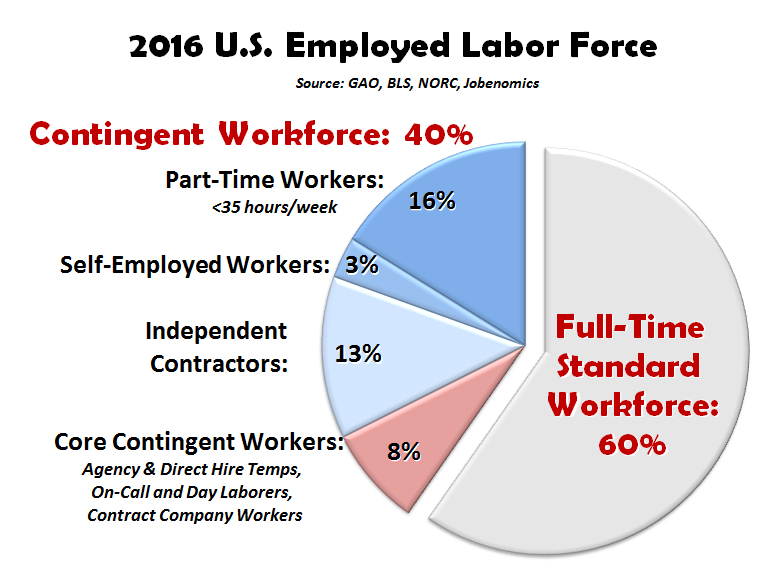Jobenomics U.S. Contingent Workforce Report
The U.S. Contingent Workforce Challenge
By: Chuck Vollmer
Download 30-page report at:
U.S. Contingent Workforce Challenge - 4 April 2016
Executive Summary
Jobenomics reports on U.S. employment and unemployment size, characteristics and trends. This employment analysis focuses on the U.S. labor force, business and job creation, and transformative trends—with emphasis on the 60 million workers in the rapidly growing, and underreported contingent workforce.
The Bureau of Labor Statistics (BLS) defines the contingent workforce as the portion of the labor force that has “nonstandard work arrangements” or those without “permanent jobs with a traditional employer-employee relationship”.
The “contingent” workforce could be the predominant source of employed U.S. labor by 2030, or sooner, depending on economic conditions and seven ongoing labor force trends. Today, Jobenomics estimates the contingent workforce to be 60,000,000 employed Americans or 40% of the total employed workforce. By 2030, this will rise to 80,000,000, or 50%, of the total employed workforce.
By 2030, or sooner, Jobenomics forecasts that contingency workers will be the dominant (over 50%) component of the U.S. workforce. This forecast is based on seven factors: (1) increasing labor force losses versus labor force gains, (2) adverse corporate hiring and employment practices, (3) revolution in energy and network technologies, (4) automation of manual and cognitive jobs, (5) impact of the emerging digital economy, (6) shift from full-time, to part-time and task-oriented labor, and (7) cultural differences of new labor force entrants.


















[…] are ahead of the masses. It is projected that 50% of the US labor force will be contingent by 2030. Look at you implementing the wave of the future ahead of all of your peers! While we will be […]